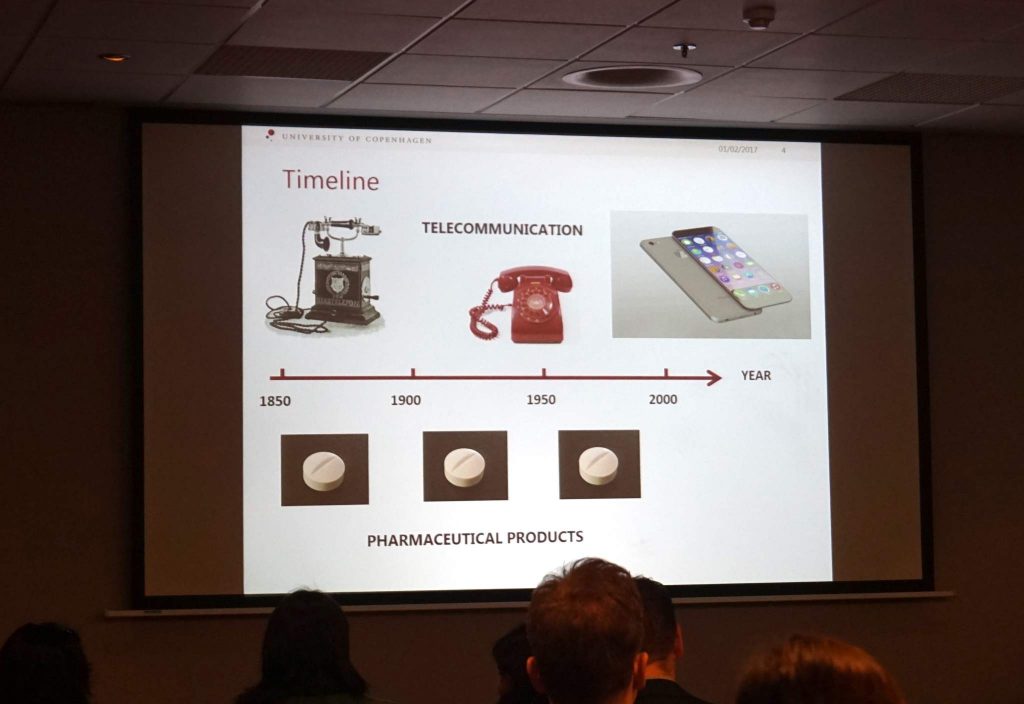The final day of the 3D Medical Expo 2017 in Maastricht, featured a full program of 9 seminars from industry experts looking at the possibilities of 3D Medicine Printing.
Adding to an already established industry
In relation to other areas of the healthcare industry, such as dentistry and medical implants, 3D printed medicine is a relatively new concept.

Medicine in tablet form has been in circulation since 1500 BC, but the first patent for a pill as we know it today was granted in 1850. The industry is well-established and, ultimately, the drugs work.
But a new school of thought, based on the amount of data technology is now able to collect, pharmacists are better prepared to provide a service personalized to individual patients’ needs.
Two-layer tablets
Professor Jukka Rantanen is from the Department of Pharmacy at the University of Copenhagen in Denmark. His seminar at the 3D Medical Expo 2017 focused on Designing compartmental pharmaceutical products based on 3D printing.
In the talk, Professor Rantanen details the opportunity to 3D print pills with inner geometries, i.e. one drug forms the outer shell of a tablet and another fills the inside. The advantages of developing this type of drug are that it gives more control over how and when a particular treatment is released into the body.
Developing the means to produce what Professor Rantanen terms “two layer” drugs is of course a substantial challenge to researchers. Additionally, Professor Rantanen points out that marketing & distribution is one of the biggest challenges to 3D printed pharmaceuticals.
This idea was then picked up by Dr Mohamed Albed Alhnan, Senior Lecturer in Pharmaceutics at the University of Central Lancashire in the UK.
Mass-customization
Speaking about the Emergence of 3D printed dosage forms: A focus on FDM 3D printing, Dr. Alhnan compares 3D printing drugs to the traditional mode of manufacturing medication. He explains that the efficacy of traditional methods is for producing mass quantities of products.

To compete with this mass production, Dr. Alhnan suggests the mass production of pharmaceutical ink that can then be tailored at the final stages to produce a personalized treatment for patients. This concept then makes the technology attractive to a mass-market.
Legal implications
Both ideas are brought together by An Vijverman, a lawyer and partner at Dewallens & Partners Law Firm based in Belgium.
In Legal Issues around 3D Printed Drugs, Vijverman discusses EU legislation surrounding the classification and marketability of drugs giving a feasible idea of how such concepts could make it to market.
She explains simply that though there are there categories that 3D printed drugs could fit into, it would actually require a complete reassessment of classification systems for the methods and pills produced to filter into the market.
In her opinion, 3D printed drugs will eventually be defined in a class entirely of their own rather than fitting into existing classification for medicine.
For 3D printed medicine, the industry is then in the complicated position of having to prove their concept, but also define how it should be controlled and assessed for quality.

For more insights into the emerging applications of 3D printing sign up to the 3D Printing Industry newsletter.
If you know of any projects using 3D printing for medicine you can nominate the research in the 3D Printing Industry Awards.
Featured image shows ‘Cradle to Grave’ installation by Pharmacopoeia, an representation of the amount of drugs taken in a lifetime by an average adult. On display at the British Museum. Photo by Beau Jackson


